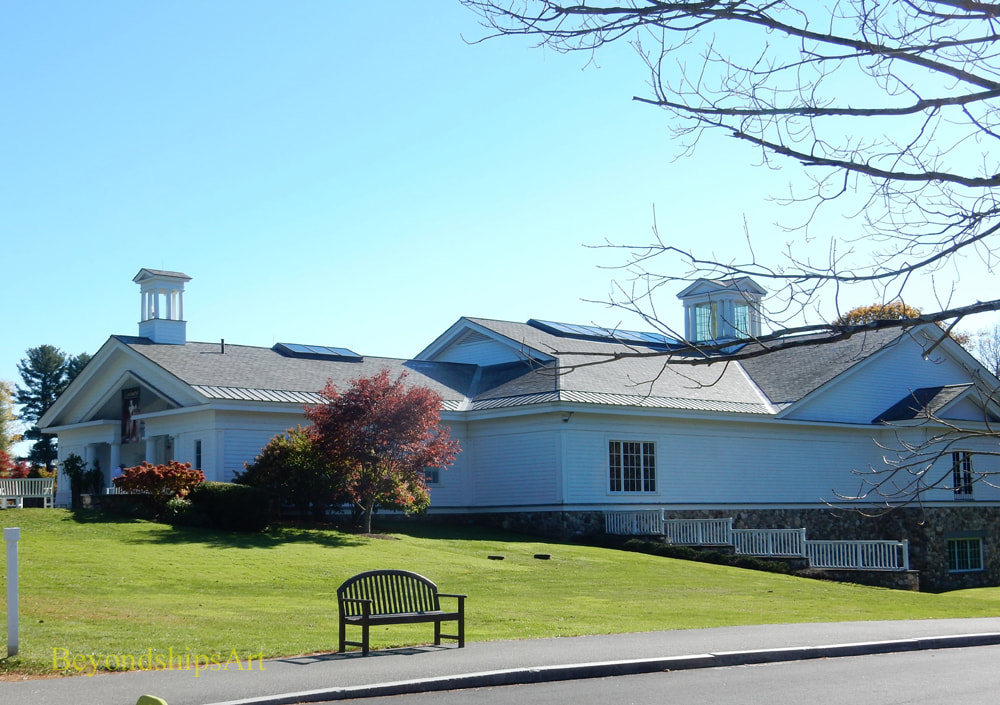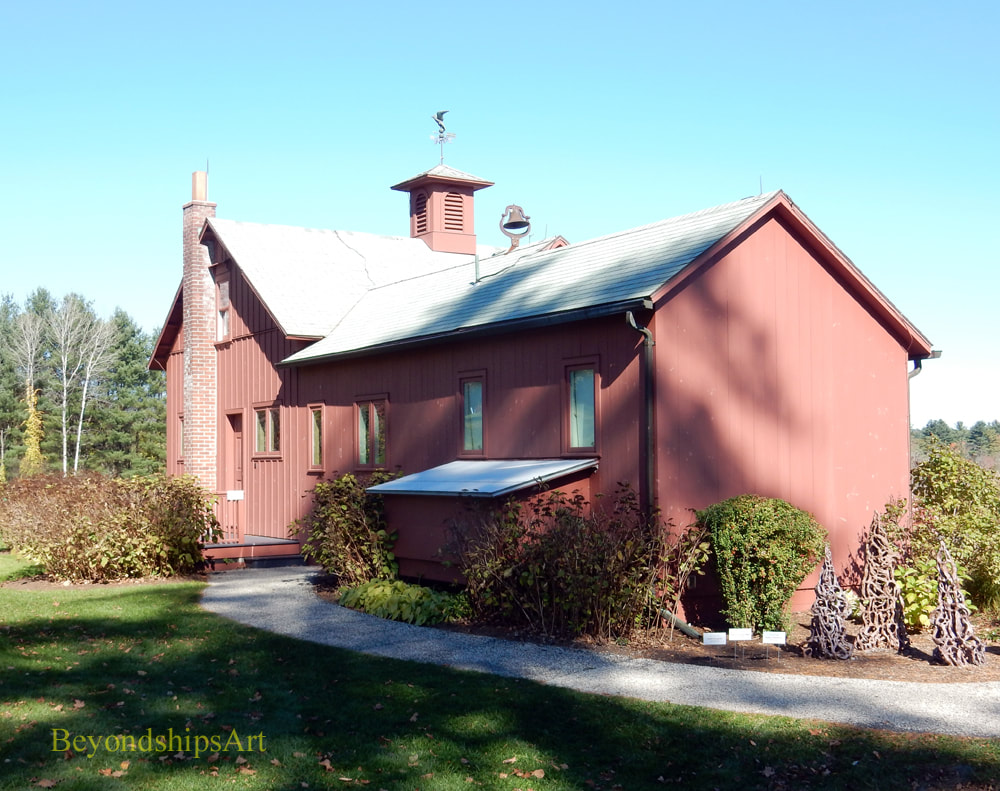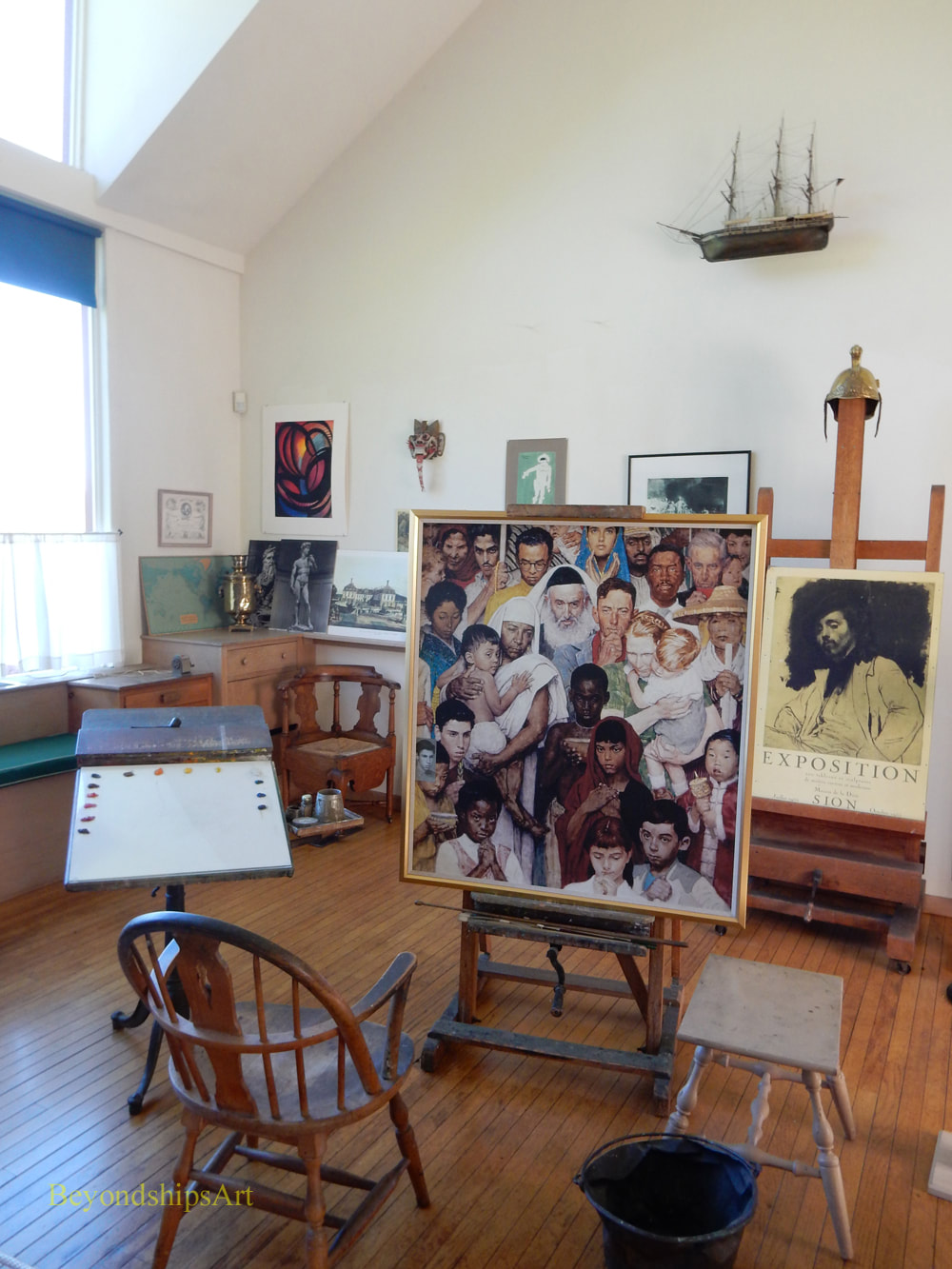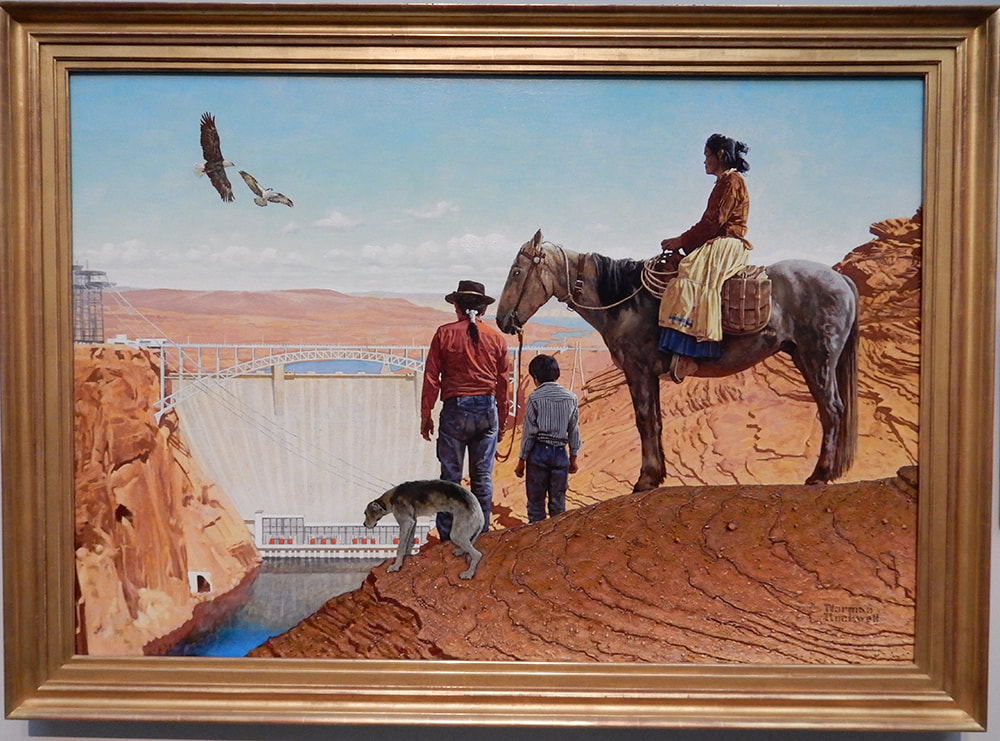|
The Norman Rockwell Museum in Stockbridge, Massachusetts is dedicated to the work of one of America's most popular artists, Norman Rockwell, and more generally to American illustration.
Norman Rockwell was born on February 3, 1894 in New York City. However, by age 10, the Rockwells had moved to the then-still countrified suburb of Mamaroneck, New York. Long interested in drawing and art, Rockwell left school at 16, in order to devote himself to art. At first, he studied at the National Academy of Design. However, he soon enrolled at the progressive Art Students League of New York where he studied under, among others, George Bridgeman, whose methods are still taught today. In those days, illustration was considered a lesser art form than fine art. Most art students aspired to become great painters and grumbled when the only work they could find was doing illustrations for books, magazines and advertisements. However, Rockwell wanted to be an illustrator, it enabled him to use his talent to explore people and everyday life. Rockwell quickly fund success as an illustrator. Indeed, he was commissioned to do a series of Christmas cards at age 16. However, his greatest success was in doing illustrations for magazines, including 71 covers for the most popular magazine of the day the Saturday Evening Post. His success enabled him to live and work in small country towns, at first in Vermont and later in Stockbridge. As his fame grew, Rockwell met and often painted the rich and powerful. However, his favorite subjects were not famous but rather everyday people. Rockwell's works are realistic. It is hard, if not impossible, to find errors in the faces and figures that he drew. His draughtsmanship was superb. More importantly, his compositions and the expressions he captured told stories and conveyed ideas that resonate with viewers. Although the placards next to the works in the museum are interesting, there is no need to read them to understand the paintings. Many of the paintings are humorous slice of life scenes. However, Rockwell also dealt with important 20th century social issues such as the World Wars, the Civil Rights struggle and the War in Vietnam. Commissioned by the Department of the Interior to paint a picture of the new Glen Canyon Dam, Rockwell insisted on having a Navajo family gazing at the dam. Their dejected body language speaks eloquently as to what they thought of this massive intrusion into their environment. Classic Rockwell. The museum is located in the countryside outside of Stockbridge on the former Linwood Estate. It encompasses some 36 acres of rolling hills and forest. With so much natural beauty, visitors may wonder how Rockwell could have resisted becoming a landscape artist. However, there is a simple explanation – contrary to what many visitors assume, Rockwell did not live where the museum is now located. Rather, he lived and worked in the village of Stockbridge itself where he could have more contact with people - - the subject that inspired his art. In 1993, the museum moved to its present location. It began life in a historic building known as the “Old Corner House” in the village of Stockbridge in the 1960s. At first, it was a local history museum that also included a number of original paintings by Stockbridge's most famous resident. However, as it became known as a place to see Rockwell's work, it began attracting thousands of visitors. By the end of the decade, the museum bowed to public pressure and officially became the Normand Rockwell Museum. In 1973, Rockwell donated a large amount of his work and artifacts to the museum. There are several buildings on the museum campus, two of which are open to the public on a regular basis. First, there is the large exhibition building designed by Robert A.M. Stern. It includes large galleries, which spread out across two floors as well as a shop. In addition to rotating exhibitions of Rockwell's works, the galleries host visiting exhibitions of works by other illustrators. Second, there is Rockwell's studio, which was moved from downtown Stockbridge to a spot on a hillside overlooking fields and a wooded pond. Inside, the original furnishings have been preserved and are arranged as Rockwell had them when he was working. It is like Rockwell just stepped out. A knowledgeable docent greets and answers questions from the small number of visitors who are allowed in at any one time. Several sculptures by Rockwell's son Peter dot the lawns of the campus. There is also a fine example of a Berkshire “cottage,” which acts as the museum's administration building. For more information on visiting, see the Norman Rockwell Museum's website. |
Above: The exhibition building.
Below: Norman Rockwell's studio. Above: The interior of Rockwell's studio.
Below: In addition to illustrations, Rockwell occasionally did paintings such as this view of Glen Canyon Dam commissioned by the Department of the Interior. |
|
|
|
Places to see art - - Stockbridge, Massachusetts - - Norman Rockwell Museum



